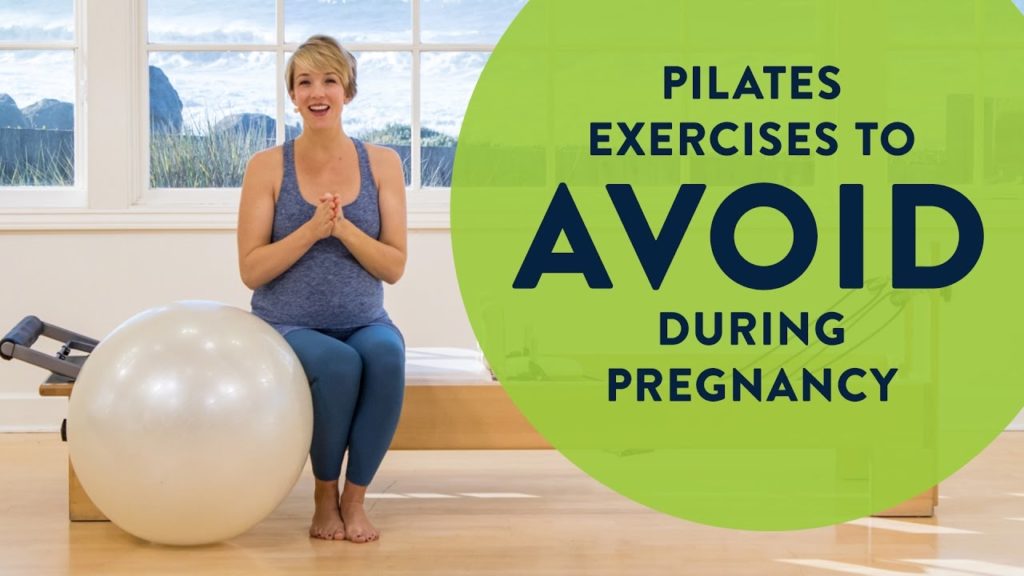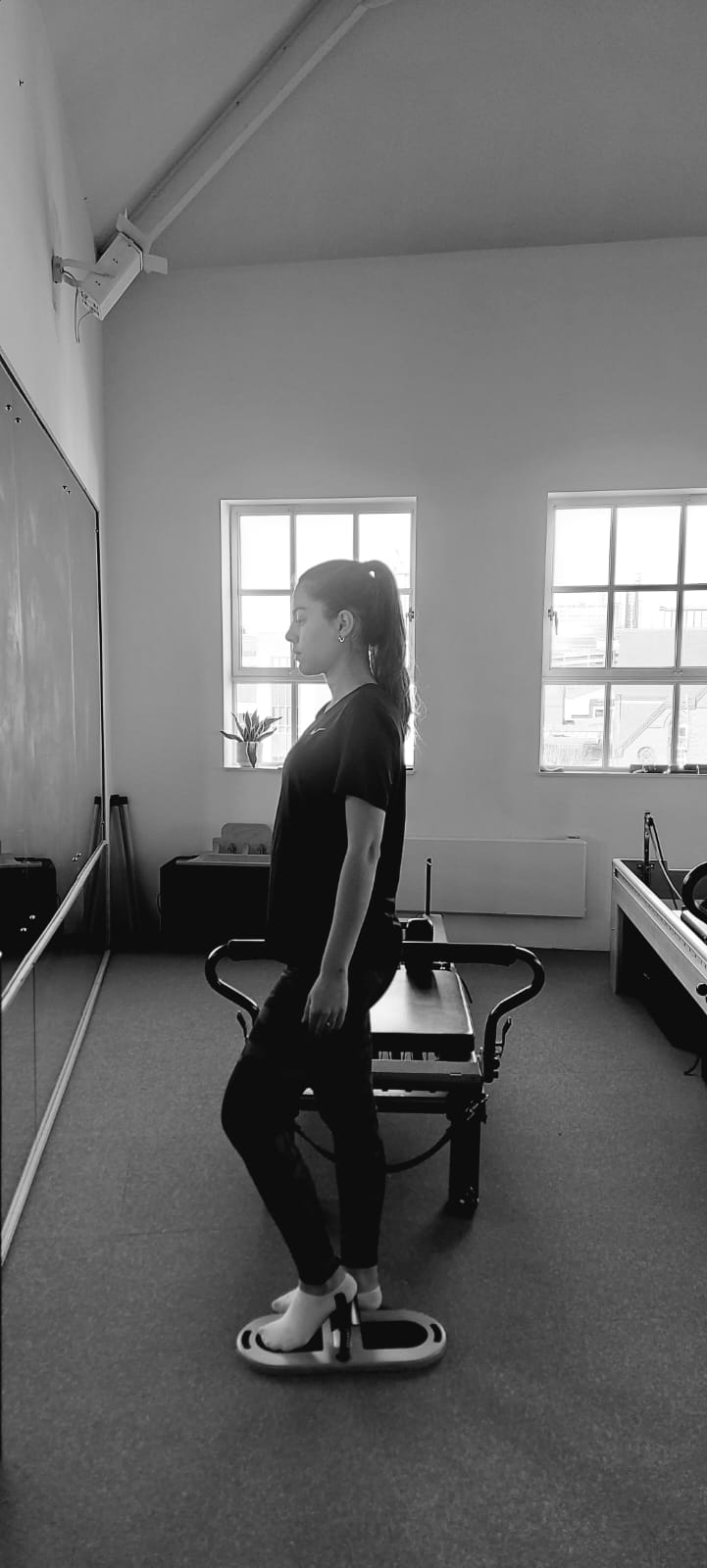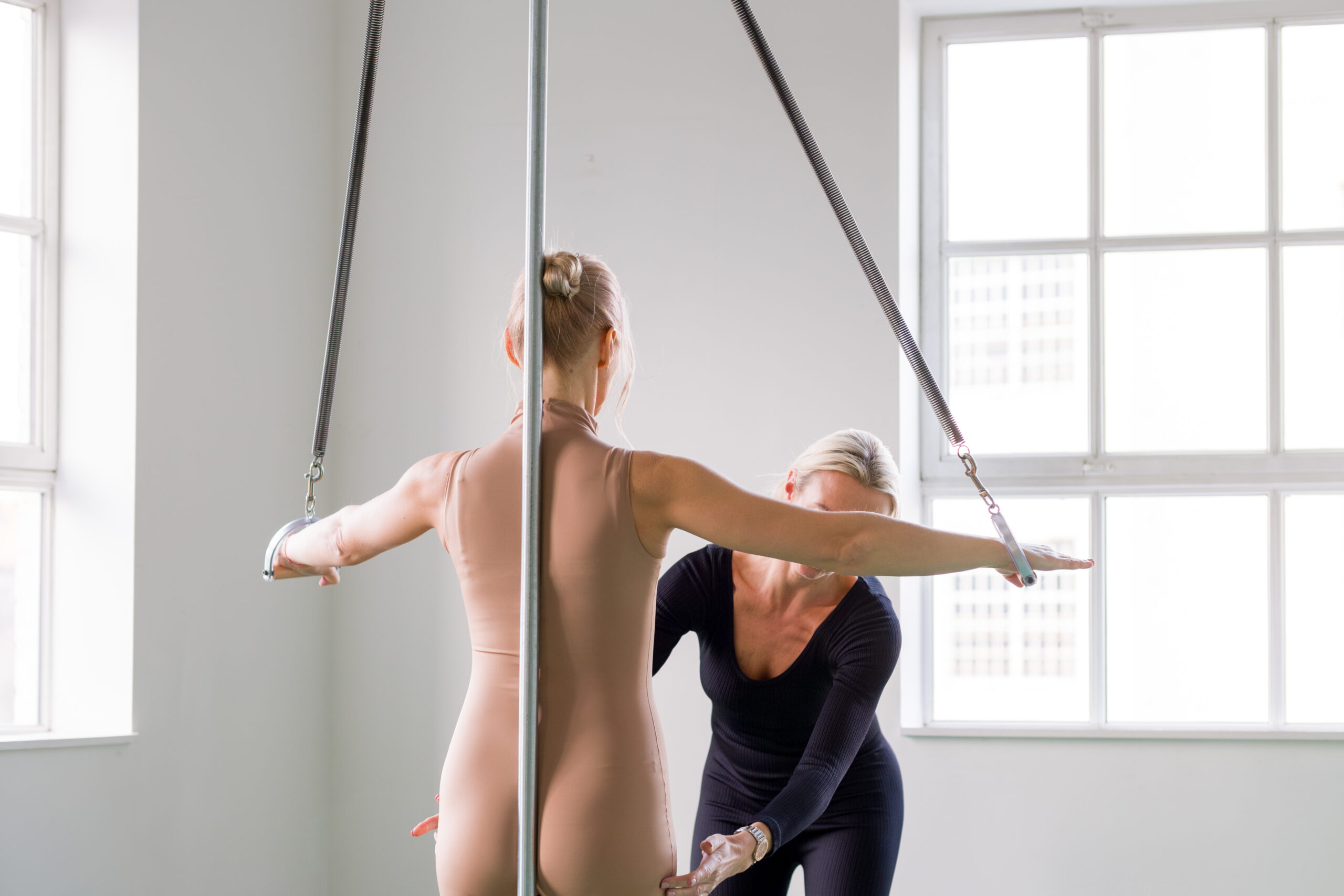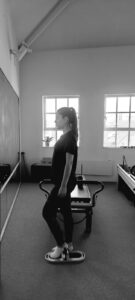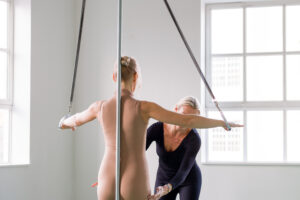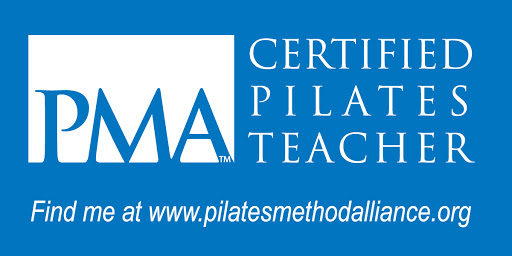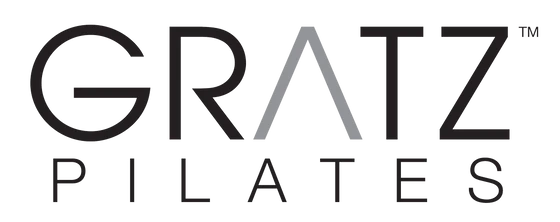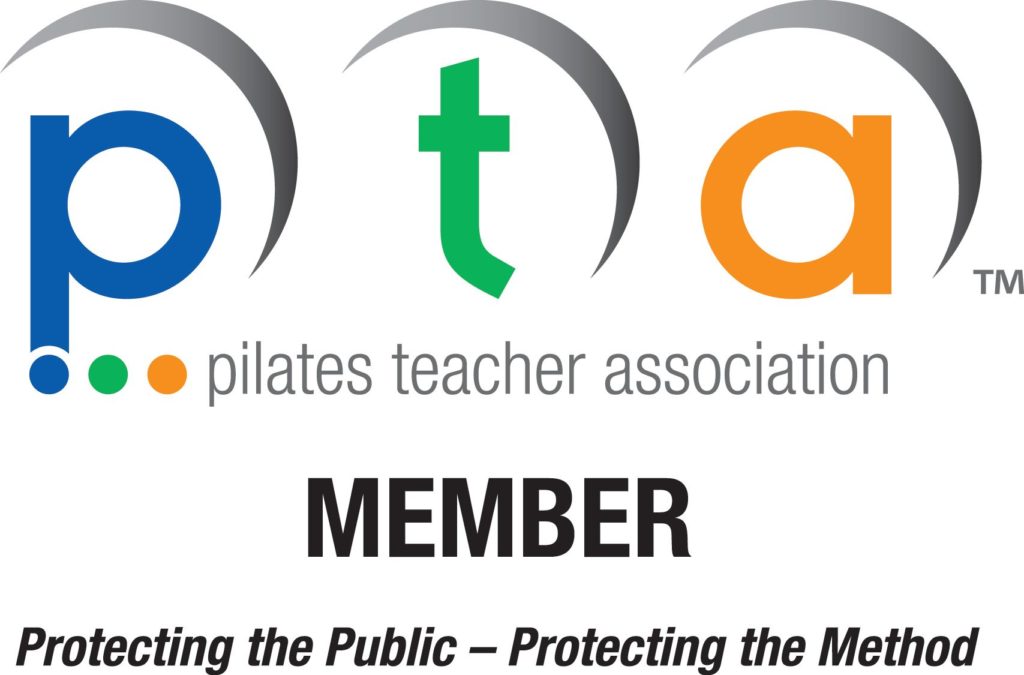Table of Contents
Pilates & Your Pregnancy
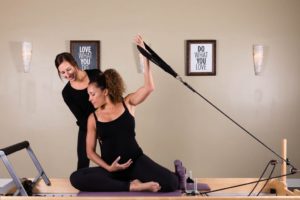 Being active is an important part of a healthy lifestyle and this is equally true during pregnancy and after delivery. Arguably, it is more important to exercise during pregnancy than at other times.
Being active is an important part of a healthy lifestyle and this is equally true during pregnancy and after delivery. Arguably, it is more important to exercise during pregnancy than at other times.
However, the physical changes that accompany pregnancy will require so many modifications to the exercises that in the end the exercises that you will be doing no longer resemble the exercises that people do as a normal Pilates workout. But that doesn’t mean we can’t do anything – we can, but it won’t really resemble a normal Pilates workout.
Also, you will find that you body is changing so dramatically and so quickly that Finding the Connections (thigh, buttocks and stomach) – that characterises Foundational Levels can become elusive.
A quick summary of the process
The essence of at Pilates Starter Levels is learning to move the body in non-complex movements from the centre and there’s a focus on alignment (which can change as your pregnancy develops). More advanced levels build on this: more complex movements are performed and there is a focus on the extremities – but still with the movement originating from the centre.
As you pregnancy develops, your programme will change from the centre towards the extremities. Post Partum, the process is reversed.
In Pilates, we learn to work from the inside towards the outside. As your pregnancy develops, you will find it increasingly difficult to “find your connection” to your centre.
Like this content?
Why not book a first lesson?
As a very general rule of thumb, Pilates in an exercise methodology that works from the centre in other words, from the core (both upper and lower) to the extremities. As the pregnancy develops, you will find that working from the core will become more difficult and you will find that it becomes more difficult to find those connections in your body that Pilates is all about. Similarly, post-natal programme work in the opposite fashion: start from the extremities and gradually work towards the core over a period of weeks or months.
Just so that we are clear about what we’re talking about here, when I say Pilates, I’m referring to the system of exercises designed by Joseph Pilates. But as your pregnancy develops, this programme will require more and more modifications – so I guess we’d call it “modified Pilates” or “Pilates based”. It will resemble much more “Pre-Pilates” than actual Pilates – and that is perfectly fine because Pre-Pilates can be thought of as the Foundations of Pilates.
1.0 Pilates in Pregnancy: The First Trimester
There are no specific contraindications as far as body positions or specific exercises. But all exercise should be based on your energy and geared to minimize fatigue. This means that Group work (when everyone is doing the same thing) should be discontinued and more closely monitored 1:1 lessons should be taken.
Some women are fully able to continue with all of their normal routines; others may experience fatigue, nausea and disturbed sleep. These factors will usually be the limiting factor to the levels of activity you can maintain.
High Risk Factors
There are however important exceptions to the green light given above and these exceptions relate to high risk factors:
- 1st pregnancies over the age of 35
- a history of miscarriages
- pregnancies resulting from in vitro fertilisation
- medical advice
In the above cases, you should either minimise or even stop exercising until you are past the 12 week mark.
In any case, it is important that your doctor is aware of what you are doing and has given you the thumbs up to continue…
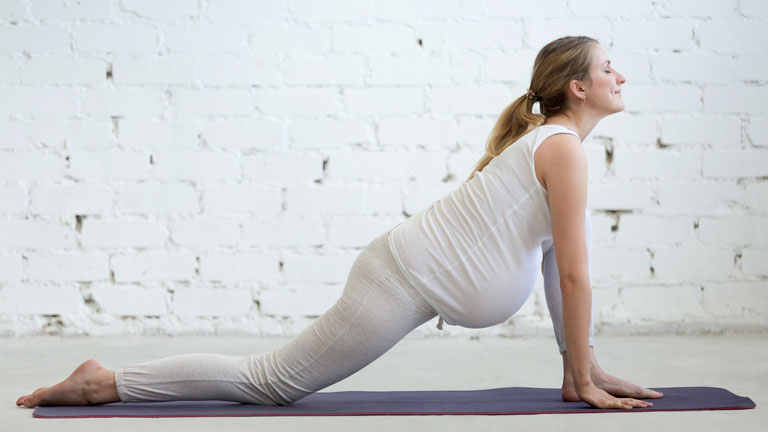
1.2 Exercises to focus on during the first 3 months:
This is the time to address specific needs associated with pregnancy. Firstly, the clock is ticking and you may find that you simply lack the energy to continue later on – so we need to build up as much strength as we can now. Secondly, you will probably find that you simply can’t do many of the exercises that are advisable: lying down on your back may become a problem.
Addressing the key physical needs of the pregnant woman.
These are all hard-baked in the regular Pilates repertoire:
- Pelvic floor work – finding the connection to the “Trinity”: thighs, buttock and stomach.
- Abdominal strengthening: ditto the above
- Core & pelvic stabilization: ditto the above
- Lower back articulation and rib cage mobility
- Arm and upper back strengthening – remember that you’ll be carrying the baby in front of you both before and after birth: strong upper back and shoulders will help with that. Again, this is hard baked into the method.
- Adductor work: leg closing (for example: use a small ball or magic circle between the knees in leg work or hip work)
- Inversion exercises such as short spine stretch and rolling exercises should be omitted at this time.
2.0 Pilates in Pregnancy: The Second Trimester
- In this term, there are some very significant changes that impact on your exercise routine.
- Prone work (face down) becomes difficult.
- Your abdominals will begin to feel disengaged making core work (pelvic stabilisation and abdominal strengthening) more difficult.
- Feelings of nausea can generally ease up, but you may begin to feel more tired towards the end of this period.
- Towards the end of this trimester, blood pressure may drop – learn the recovery position.
- More programme modifications are needed so that you can continue to exercise effectively and safely.
- Increased focus on legs, arms and upper back strength with chest flexibility.
2.1 Months 3 to 4 (12-16 weeks)
Sometime around the end of the third month or during the fourth month, it will become uncomfortable to lie on your stomach. You will not want to continue with prone (lying on your front) work and this should be discontinued. You will be the one to inform your instructor when you don’t feel comfortable.
The abdominals also begin to feel a bit more out of touch around this time This is because the the abdomen stretches and the pregnancy starts to show.
If you have been having issues with morning sickness and fatigue, this will usually ease up about this time and you will have more energy to work with.
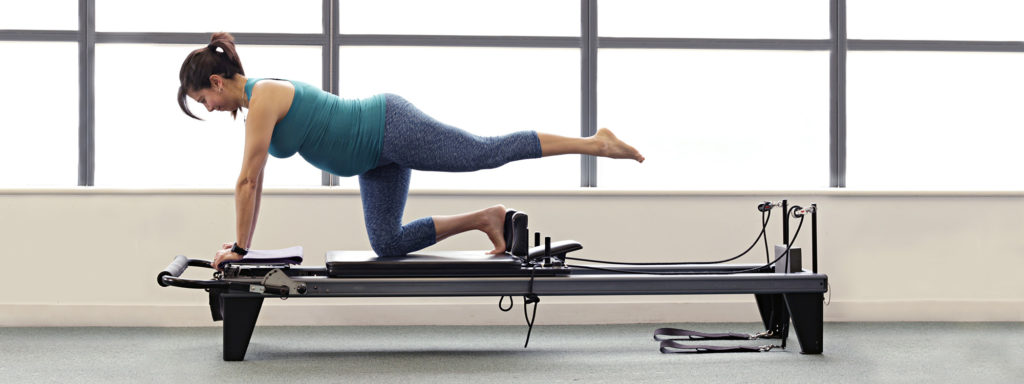
2.2 Program modifications during months 3 and 4
- This is not the time to start Pilates.
- Discontinue prone work
- Discontinue inversion exercises (Short Spine, Roll Over, Rolling)
- Lower back stretches.
- Abdominal exercises will need modifications so that are comfortable
- Maintain the flexibility of the abdominals by doing Cat/Camel or supine stretches over a physioball or use the trapeze.
- Your blood pressure might drop, necessitating you to change positions more slowly.
- Low blood pressure may leave you feeling light headed if you lie on your back for more than five minutes.
- Increased feelings of tiredness.
- Stop deep hip flexion.
2.3 Month 5 – Blood Pressure (Week 20)
You might find that if you lie for an extended period of time supine (on your black) you experience light headedness. This is because the uterus is large enough to start putting pressure on the arteries that run along the inside of the spine. Your instructor will ask you to lie on your left hand side to recover if you’ve been feeling the effects of low blood pressure during exercise – especially supine.
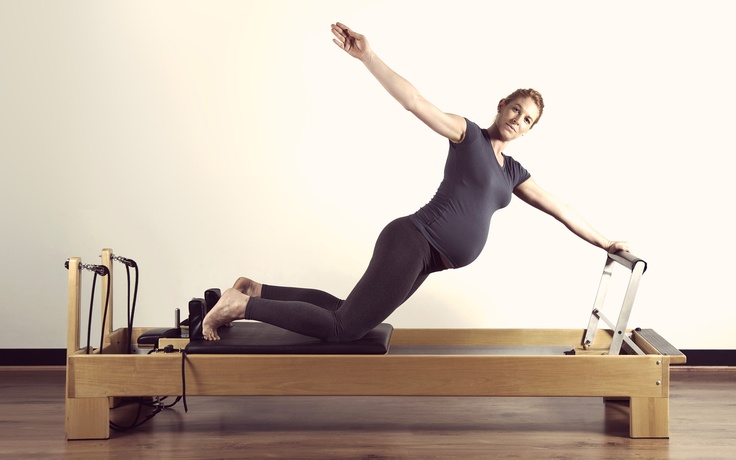
2.4 Program modifications during months 4 and 5
Your instructor will either discontinue supine work or limit it to no more than 5 minutes at a stretch. If you start to feel light headed or your legs feel weak or tingly, Tell your instructor immediately.
Exercises that deeply work the psoas and the hip flexors (deep bending of the legs at the hips should be discontinued.
3.0 Pilates in Pregnancy: The Final Trimester
- Abdominal size really starts to have an impact on movement.
- There is an increased danger of tendonitis due to Relaxin hormone levels.
- Tiredness and lack of energy can really become an issue.
- Individual differences in ability to exercise become very marked at this time.
3.1 Month 6 – 9
At this point in the pregnancy the size of your abdomen will start to affect your ability to flex your spine and to deeply flex your hips (see above).
The hormone relaxin is starting to circulate in the body at higher levels leading to a loosening of the ligaments around the joints. This can lead to a lack of stability around the pelvis and cause low back, sacroiliac joint problems and hip problems to flare up.
Edema can also start to settle in the ankles and lower legs.
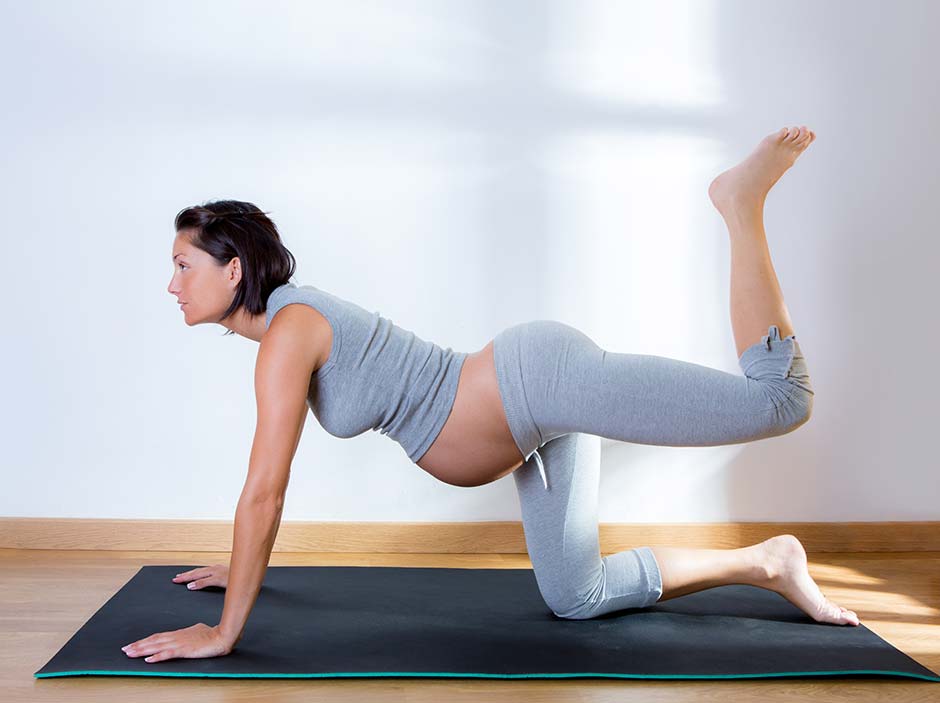
3.2 Program modifications during months 6 – 9
Modify abdominals to suit the growing abdomen (Roll back with straight legs works better than the Teaser)
- Adopt a wider leg position on leg and foot work
- Emphasis the limbs rather than the core
- Increase stability of the pelvis and hips
- Adductor exercises
- Abductor exercises
- Light abdominal work
- Gluteal strengthening
- Quad strengthening
- Work arm and upper torso strength for holding the baby
- Keep the feet up when possible to decrease swelling
As with any program, each individual will be different, particularly if there are any rehabilitative issues involved or if the mother is already ‘super-fit’ (dancer, yogi, pilates goddess).
4.0 Pilates after Pregnancy: Post natal
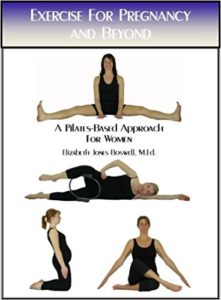
As soon as you feel like moving, you can start doing simple exercises such as: simple core activation, pelvic floor and pelvic stability work. If the delivery was vaginal, you will be able to return to a beginning level routine as soon as you have stopped bleeding and feel up to it.
If you had any episiotomy repairs you may want to minimize hip adduction and anything uncomfortable for 4 to 6 weeks until the area begins to heal.
If the baby was delivered by cesarean section, strenuous exercise is usually not suggested for 6 to 8 weeks following delivery. Gentle core work is very helpful but it is not wise to put stress on the sutures that are healing.
Once you are cleared by their doctor for exercise, it is wise for you to start off conservatively and slowly until you feel you have your full energy back.

